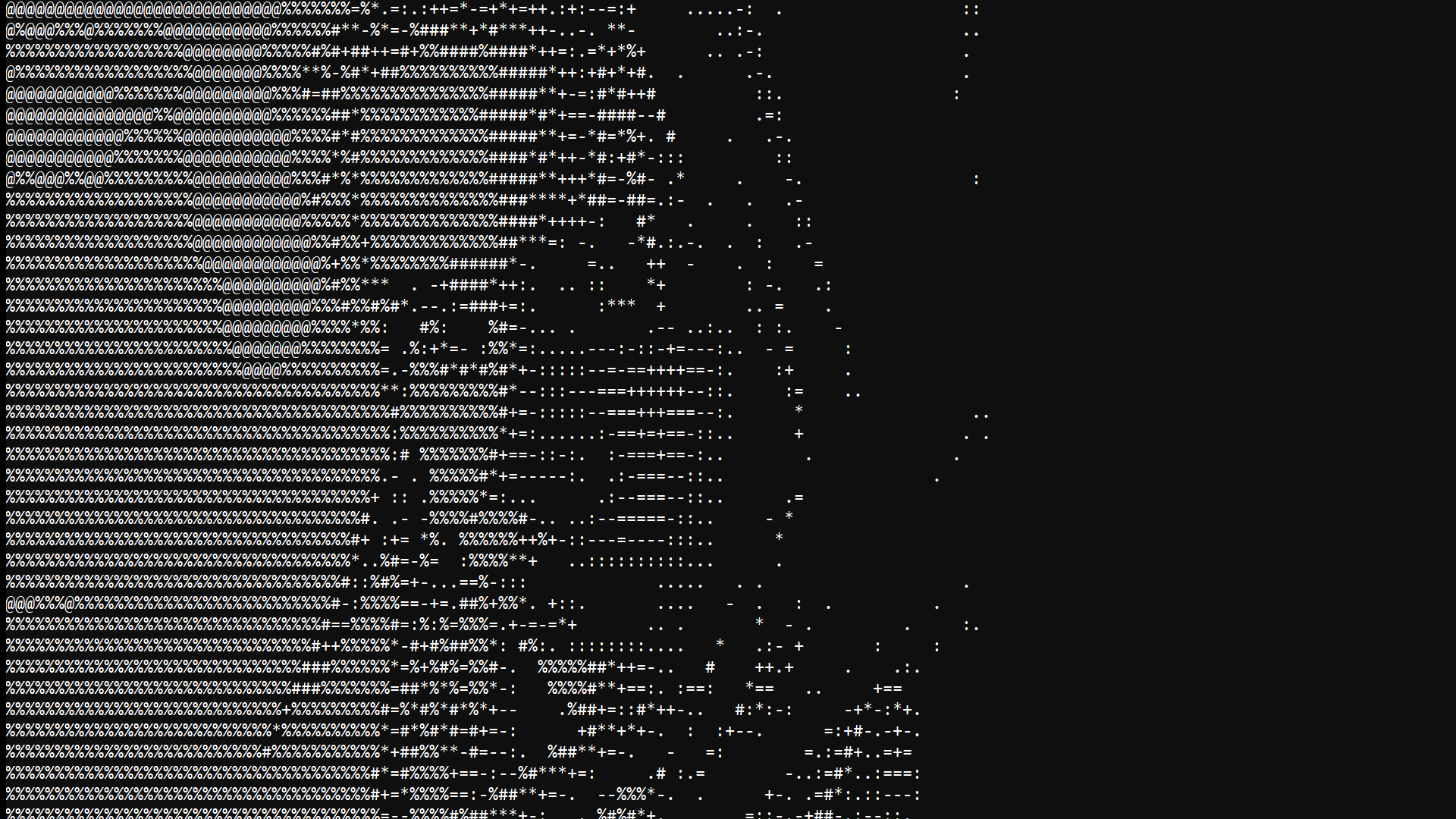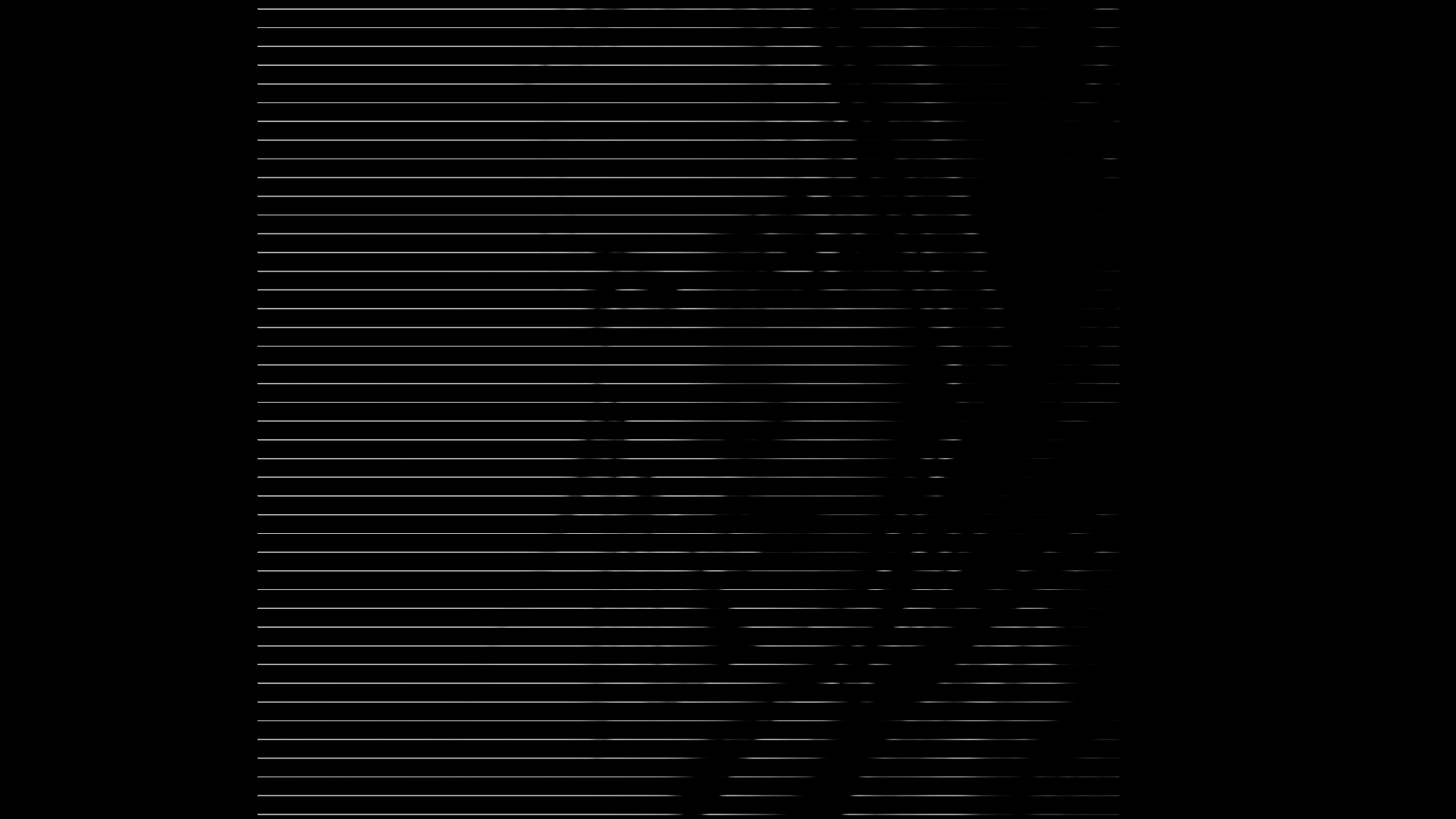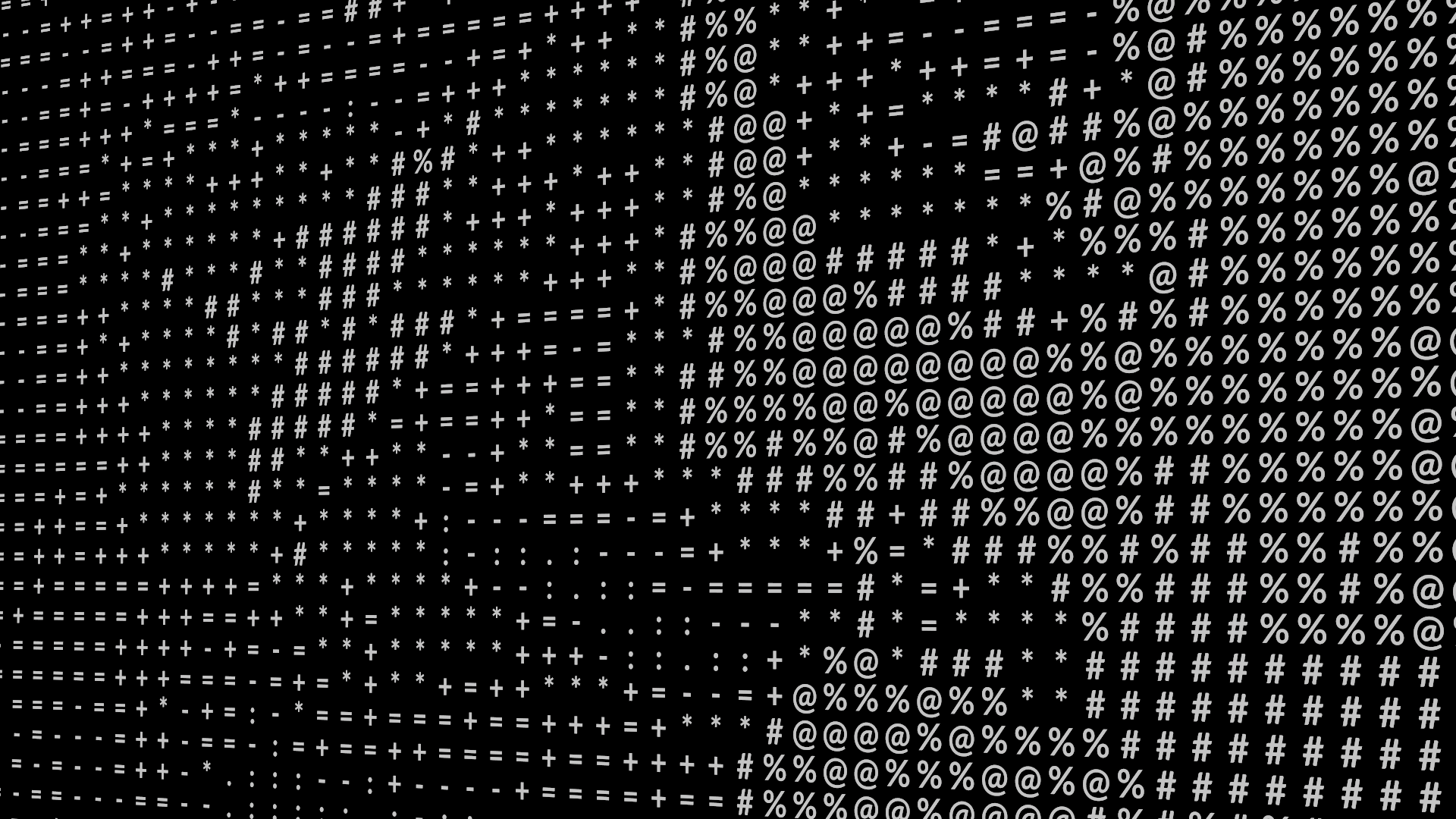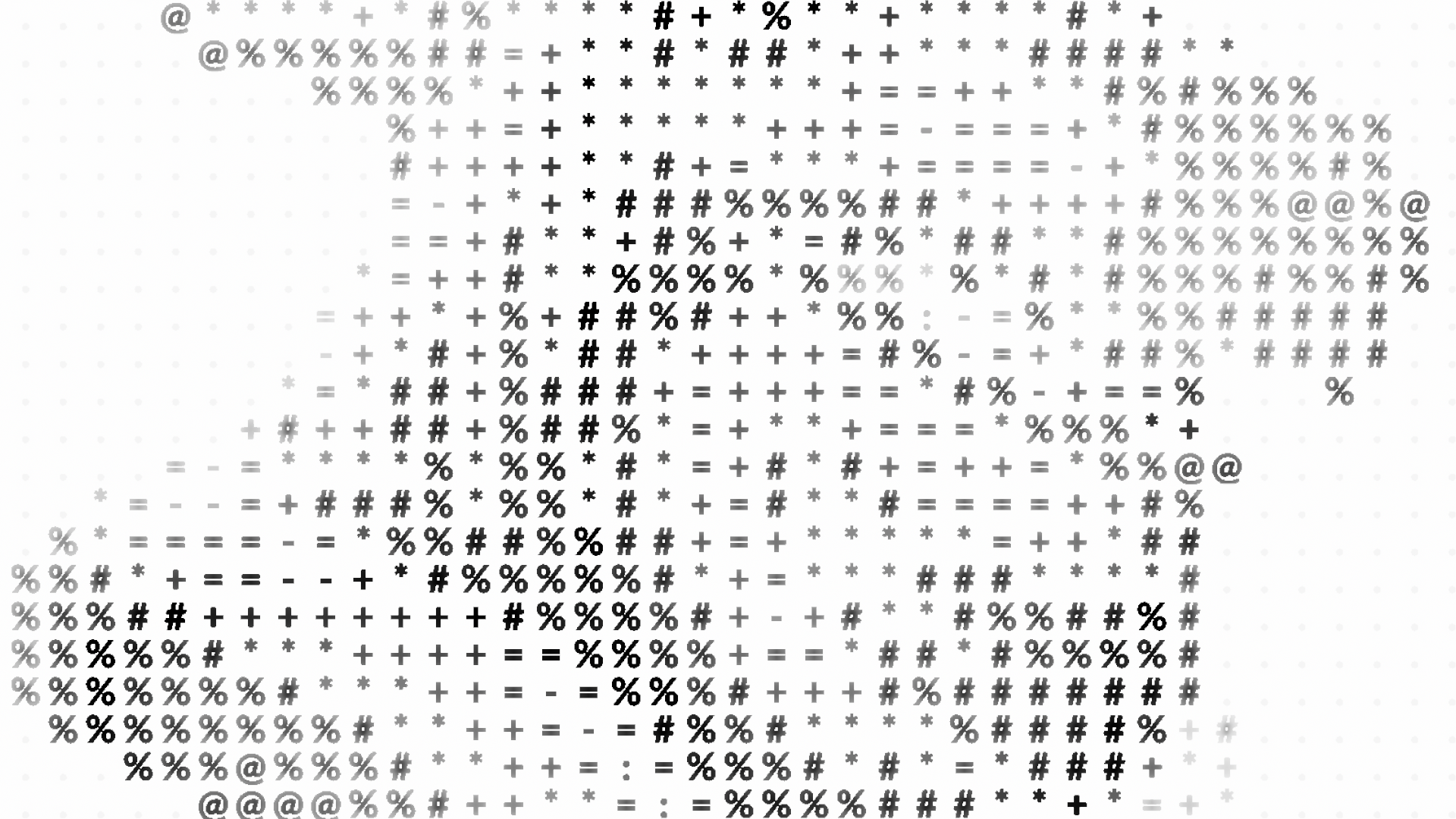

Various methods to convert images into a grid of letters.

After applying an image to a grid of rows using attribute from map, we loop through each line point by point to convert the luminance to a set of characters with increasing visual density:. : - = + * # % @. Then we print it to the console using \n for line breaks and optionally disable the commenting for reverse(chars) to invert the image.
string chars[] = array(' ','.',':','-','=','+','*','#','%','@');
//chars = reverse(chars);
int prims[] = expandprimgroup(0, '*');
foreach(int pr; prims){
int pts[] = primpoints(0, pr);
foreach(int pt; pts){
float a = point(0, 'a', pt);
int index = int(a * 9);
printf('%g', chars[index]);
}
printf('\n');
}
printf('\n');

Transforming image brightness into characters by using the variant attribute on the copy to points-node.
Centering letters on top of each other before copying is done by index with VEX:
int index = prim(0, 'textindex', i@primnum);
string grp = '@textindex==' + itoa(index);
vector center = getbbox_center(0, grp);
v@P.x -= center.x;

Raycasting mesh attributes and adding depth blur into a 2D volume.
Posterized colors values val are turned into text indices by counting the number of unique indices nuniqueval from the font SOP on second input.
string a = chs('attribute');
float val = point(0, a, i@ptnum);
int num = nuniqueval(1, 'prim', 'textindex');
i@textindex = int(val * (num - 1));
The blur mask is created based on the remapped distance gathered from the Ray node.